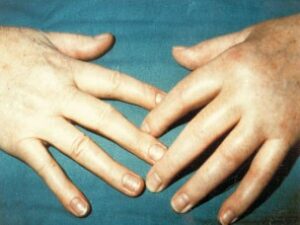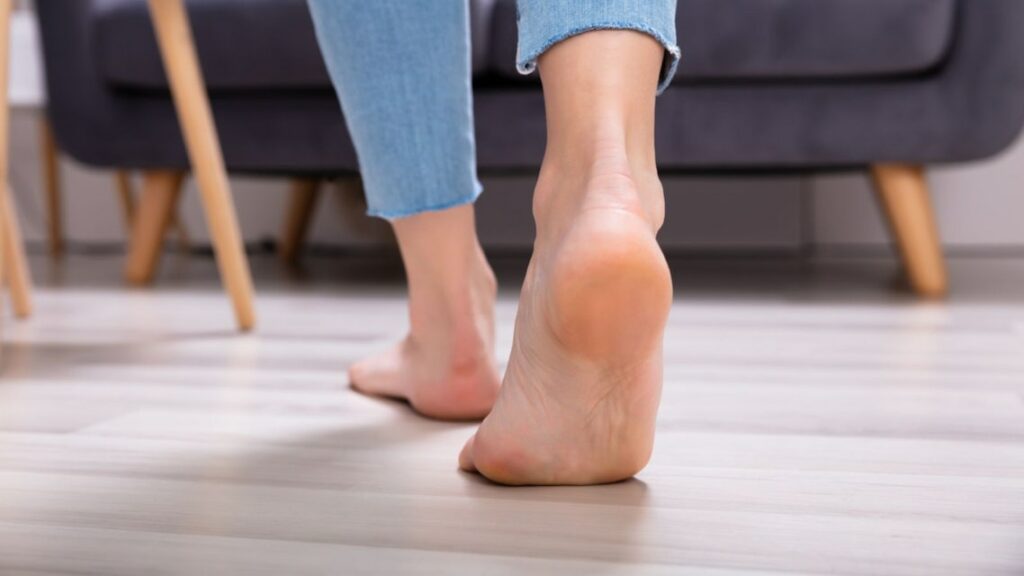Complex regional pain syndrome (CRPS) is a debilitating condition that can cause extreme pain, swelling, and changes in skin color and temperature in the affected area. Physical therapy is often one of the most effective treatments for CRPS and can help reduce pain, improve mobility, and restore function. In this patient’s guide, we will discuss the types of physical therapy treatments available for CRPS, as well as what to expect during treatment.
Contents
Understanding Complex Regional Pain Syndrome

Complex regional pain syndrome (CRPS) is a chronic pain condition that most often affects one of the arms or legs. CRPS typically develops after an injury, surgery, or stroke. The exact cause of CRPS is unknown, but it is thought to be due to dysfunction in the nervous system.
Physical therapy plays an important role in the management of CRPS. The goal of physical therapy is to reduce pain and improve function. There are generally two types of complex regional pain syndrome:
Type 1: This type of CRPS typically develops after an injury or surgery to a nerve. The pain is usually out of proportion to the severity of the initial injury.
Type 2: This type of CRPS typically develops after a stroke or other damage to the central nervous system. The pain is usually constant and severe.
There is no cure for CRPS, but the condition can be managed with medication, physical therapy, and other treatments.
What to Expect from Physical Therapy?
If you have been diagnosed with complex regional pain syndrome, your doctor may refer you to a physical therapist. The physical therapist will work with you to develop a treatment plan that meets your individual needs.
The physical therapist will start by assessing your pain and function. This may include tests and measures to determine the severity of your pain and how it is affecting your ability to perform daily activities. The physical therapist will also ask about your medical history and any other factors that may be contributing to your pain.
Based on the assessment, the physical therapist will develop a treatment plan.
What Type Of Physical therapy Is Used In Complex Regional Pain
Syndrome?

There are various types of physical therapy which is used to help patients with complex regional pain syndrome. They are:
Manual Therapy
This includes different types of massages that help to relieve the pain and also improve the range of motion in the affected area.
Therapeutic Exercises
These exercises help to stretch and strengthen the muscles and also improve the range of motion.
Joint Mobilization
This is a type of therapy in which the joints are moved in a particular way to relieve the pain.
Ultrasound Therapy
This therapy uses sound waves to generate heat which helps to relax the muscles and also reduce inflammation.
TENS
Transcutaneous electrical nerve stimulation is a type of therapy in which electrical impulses are passed through the skin to the nerve endings. This helps to block the pain signals from reaching the brain.
Cold and Hot Compresses
These are used to relieve pain and also reduce inflammation. Apply ice and heat pack to the affected areas.
Aqua Therapy
This is a type of therapy in which exercises are done in water. This helps to reduce the weight bearing on the affected area and also helps to improve the range of motion.
Biofeedback
This is a type of therapy in which the patient is made aware of the different bodily functions like heart rate, blood pressure, etc. This helps to control the pain.
Acupuncture
This is a type of therapy in which needles are inserted into the skin at certain points. This helps to release pain-relieving hormones and also reduces inflammation.
Mirror box therapy
This is a type of physical therapy that uses the reflection of your affected limb in a mirror to create the illusion that the affected limb is moving. This can help to retrain your brain and reduce pain signals.
Graded motor imagery
This is another type of physical therapy that involves mentally rehearsing movements of your affected limb. This can also help to retrain your brain and reduce pain signals.
These are some of the physical therapy modalities which are used to help patients with complex regional pain syndrome. Depending on the severity of the condition, the therapist will choose the most suitable modality for the patient.
What Are The Benefits?
There are various benefits of physical therapy for complex regional pain syndrome they are:
Manage the pain
Physical therapy can help you in managing the pain. Pain management is one of the most important goals of physical therapy for complex regional pain syndrome. The therapist will work with you to develop a pain management plan that includes exercises, stretching, and other activities.
Improve range of motion
Physical therapy can help improve the range of motion in the affected limb. The therapist will work with you to develop an exercise program that includes stretching and range-of-motion exercises.
Increase strength
Physical therapy can help you increase the strength in the affected limb. The therapist will work with you to develop an exercise program that includes strength-training exercises.
Improve function
Physical therapy can help you improve the function of the affected limb. The therapist will work with you to develop an exercise program that includes activities that mimic real-life tasks.
Prevent further injury
Physical therapy can help you prevent further injury to the affected limb. The therapist will work with you to develop an exercise program that includes exercises that help improve balance and coordination.
What Are The Risks?
There are a few risks associated with physical therapy for complex regional pain syndrome, they are:
Pain
There is a risk of experiencing pain during physical therapy for complex regional pain syndrome. However, the therapist will work with you to ensure that the exercises are performed safely and with minimal pain.
Injury
There is a risk of injury during physical therapy for complex regional pain syndrome. However, the therapist will work with you to ensure that the exercises are performed safely and with minimal pain.
Dependency
There is a risk of becoming dependent on physical therapy for complex regional pain syndrome. However, the therapist will work with you to ensure that the exercises are performed safely and with minimal pain.
Conclusion
It may be concluded that complex regional pain syndrome physical therapy is an effective treatment for this condition. It can help patients cope with their symptoms and improve their quality of life. However, it is important to note that this type of therapy is not a cure for the condition. CRPS sufferers will need to continue to receive treatment on a long-term basis in order to manage their condition effectively.
Physical Therapy help patients recover from pain. If you’re experiencing Back pain, Shoulder pain, Knee pain, Neck pain, Elbow pain, Hip pain, or Arthritis pain, a physical therapist at MantraCare can help: Book a physiotherapy session.


